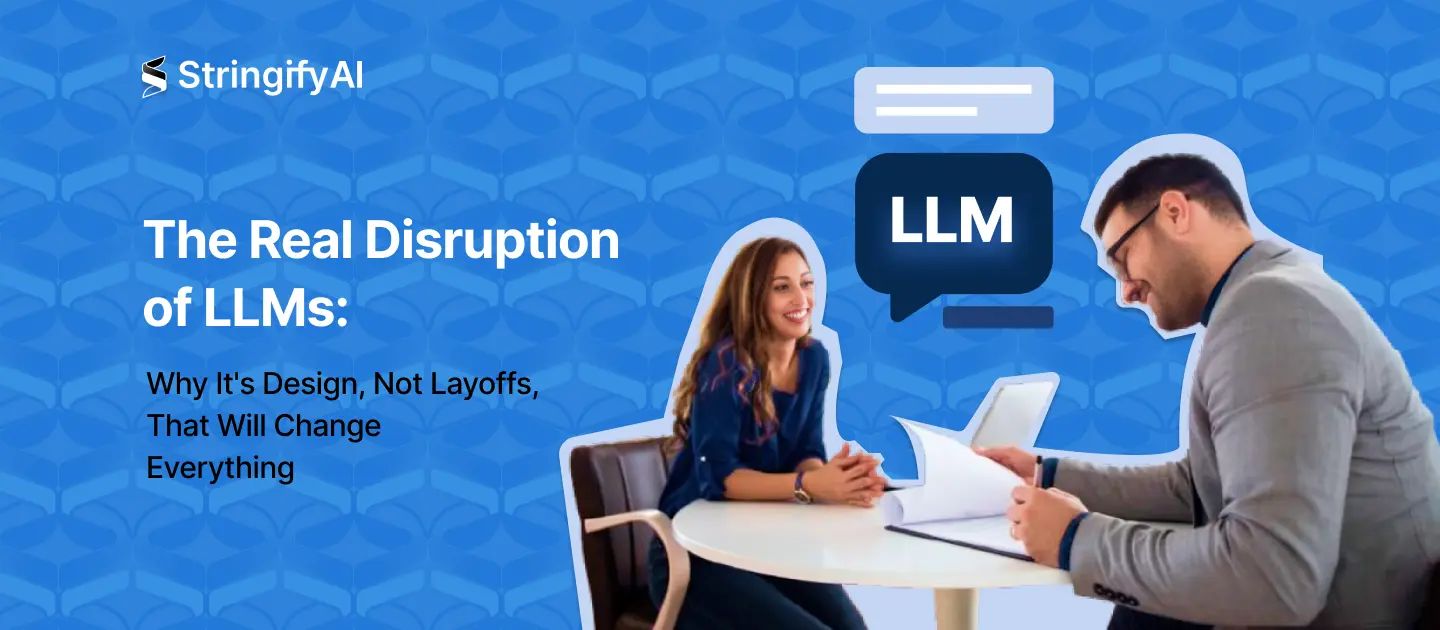The Real Disruption of LLMs: Why It's Design, Not Layoffs, That Will Change Everything
The Misleading Narrative of Job Loss
The conversation around large language models (LLMs) has fixated on a binary fear: who will lose their job. From copywriters to customer support agents, headlines ring the same alarm. But that lens obscures something more transformative and enduring: LLMs are not just changing who works, but how software works. The real epicenter of disruption? Design.
The Old Grammar of Software
For decades, we’ve built digital systems on metaphors that mimic physical tools: files, folders, tabs, dashboards. These metaphors helped users learn and navigate. Dropdowns meant choices. Checkboxes meant selection. A good UI was like a good sentence—it followed the grammar of software. But LLMs don’t play by those rules. They don’t need metaphors. They read context. They adapt. They understand intent in natural language. This is not an upgrade. It's a collapse.
Intent-First, Interface-Lite
LLMs shift interaction from interface-first to goal-first. Instead of clicking six buttons to generate a report, you say: “Compare this month’s sales to last.” The system handles the rest. Interfaces have always been deterministic: predict the user's next click. Now they’re probabilistic: guess the user's meaning. This makes traditional UI bloated. What used to be a necessity becomes friction.
The Invisible Interface
When an LLM knows your preferences, tone, org norms—it doesn't need to ask. It just acts. The result is the invisible interface:
- It shows up in Slack, not a dedicated app
- It suggests instead of requesting
- It acts on memory, not menus
This raises deep questions:
- How do we signal trust with no visual UI?
- How do users audit decisions when there’s no trail of clicks?
Design shifts from pixels to patterns. From elements to ecosystems.
Designers as Orchestrators
In this new world, designers stop building paths. They start shaping boundaries.
- From crafting flows ➞ to defining constraints
- From building screens ➞ to optimizing system suggestions
Designers become curators of possibility. They decide what the system must always ask. What values are preserved. What behavior is acceptable.
A New Literacy: Prompt Thinking
GUI users had to learn to double-click. LLM users must learn to express needs.That’s where design returns with force:
- With pre-filled prompts
- Suggestions as users type
- Visual metaphors that reinforce mental models
Design becomes cognitive scaffolding.
What to Unlearn
The hardest part isn’t technical—it’s cognitive. We must unlearn:
- That interfaces must always be visible
- That screens must be deep and wide
- That structure is the only source of clarity
And relearn:
- That clarity can come from conversation
- That minimalism is about purpose, not emptiness
- That transparency is a process, not a setting
The Opportunity Ahead
This is a historic opportunity. The best LLM interfaces won’t look like apps. They’ll feel like companions, advisors, coaches.
Designers are not being sidelined by AI. They are being called forward. To shift from arranging buttons to shaping behaviors. From menus to meanings.
The future of software is not a screen.
It’s a conversation.
